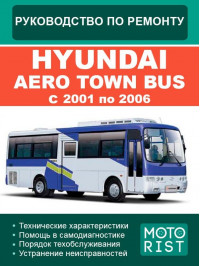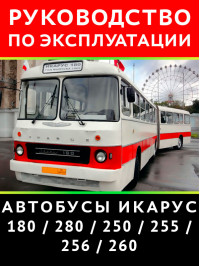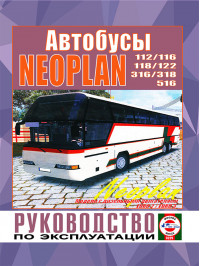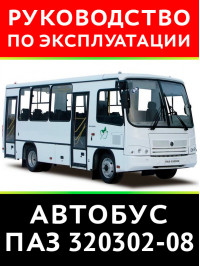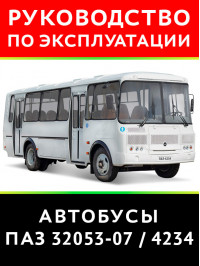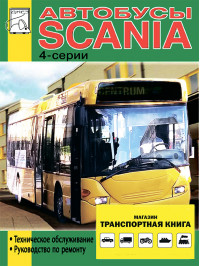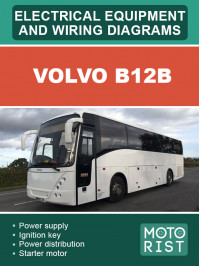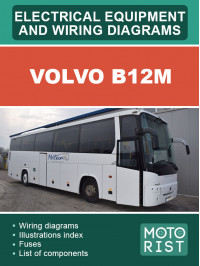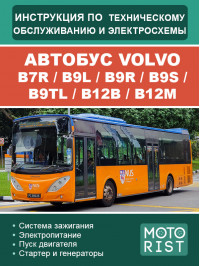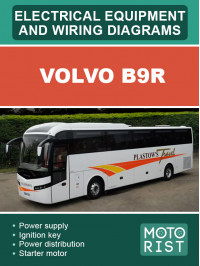Repair and service вuses in the eBook
The bus is designed to transport a large number of people and in many cases it is absolutely impossible to do without it. Recently, such comfortable buses have been produced that cannot be compared with any type of ground transport. Throughout the history of development, buses were produced by different companies and manufacturers.
The Hyundai Aero Town is a mid-range bus designed for urban and intercity travel. The main advantages of the model: high reliability, affordable spare parts, economy, stylish design. The vehicle is equipped with a 7.5 liter engine and 177 hp, complete with a manual or automatic transmission. Capacity of 33 passenger seats. In 2004, the Korean bus was modernized: developing economical gas mileage and providing high reliability and quality assurance.
The Neoplan Cityliner series of one-and-a-half-deck tourist buses have been produced since 1971. Neoplan N116 features high seats, a large luggage compartment, a toilet and a kitchen. Diesel engine with a volume of 11.9 liters and a capacity of 203 hp. located behind. The number of seats for passengers - 52. The bus was produced in four generations, during this time they modernized: the front part, wheel arches, dashboard, added air conditioning. In 96 Cityliner N116 was expanded to 13.7m.
The Swedish bus manufacturer Scania AB has been producing them since 1920. The shareholders were Volkswagen and MAN, and only since 2015 Volkswagen has owned a full stake. The Omni range of multifunctional buses began to be produced in the 90s. The city series was called OmniCity. It was equipped with a 9-liter or 11-liter engine, with an operating power of 220-260 hp, paired with a four-speed gearbox. Suburban buses OmniLink differed from the urban series only in the engine: 9L and 230 - 300 HP, which works with a five-speed automatic transmission.
The Hungarian company Ikarus specializes in the production of buses of various directions. In Europe, it was considered the leader in the bus industry. A wide range of models made it possible to take into account all the features and configurations. The Ikarus 180 was originally equipped with a six-cylinder Csepel D-619 engine with 180 hp. And later they began to install modern and reliable Raba-MAN, with a capacity of 192 hp. The Ikarus 280 was released with an even larger capacity. The model was equipped with engines from Raba, MAN, DAF, Cummins. For more than 20 years, more than 50 modifications have been developed. Today Ikarus buses are outdated and inadequate / however sometimes they are used on routes.
Russian PAZ buses were developed by the Pavlovsk Bus Plant. PAZ-32053-07 is considered the basis among all models, and for all the time it was equipped with various engines: ZMZ-5234, MMZ-245.7 and MMZ-245.9, Cummins ISF 3.8, YaMZ-5342. Now they are installing an injection engine ZMZ-5245 (gasoline or gas), as well as a diesel YaMZ-5344, which meets the requirements of Euro-5. PAZ-320302-08 were equipped with a 4.67 liter V8 engine, with an operating power of 125 hp. Number of seats for passengers - 27, maximum - 37 people.
Any kind of bus is in demand, for many passengers this is the only way to get to the city, or to travel between countries. Timely maintenance and repair of such vehicles is very important. The driver must have the minimum knowledge that may be needed on the road:
- how to diagnose faults;
- how to change oil;
- how to set up management.
Detailed information on buses can be found in the repair book, in PDF format. You can easily download the book to your smartphone and always have it at hand to find answers to your questions about setup, repair and maintenance.



